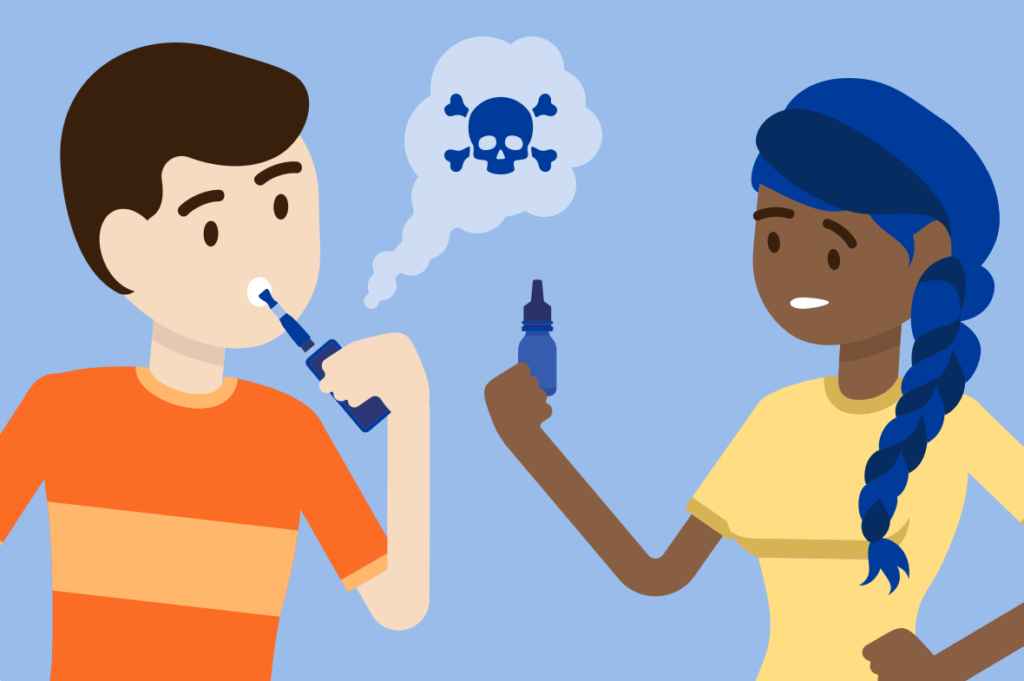Introduction
Electronic cigarettes, commonly known as vapes, have become a global phenomenon. However, in India, they have faced significant scrutiny due to their potential health risks. In this blog, we delve into the impact of vapes on India, exploring the reasons behind their popularity, the regulatory landscape, and the health implications.
The Rise of Vaping in India
Background
Vaping, also known as electronic cigarette (e-cigarette) use, involves inhaling vapor produced by battery-powered devices. These devices heat a liquid (often containing nicotine) into an aerosol, which users then inhale. Vaping gained prominence globally as an alternative to traditional tobacco smoking. In India, its emergence followed a similar trajectory.
Market Growth
Despite regulatory challenges, the vaping industry in India witnessed rapid growth. Young adults, in particular, were drawn to the allure of sleek devices, flavored e-liquids, and the perception that vaping was less harmful than smoking.
Youth Appeal
The appeal of vaping among Indian youth can be attributed to factors such as peer influence, marketing tactics, and the desire for a modern lifestyle. The trend caught on swiftly, leading to a surge in e-cigarette sales.
In summary, vaping emerged in India as an alternative to smoking, but its popularity among young adults raised concerns about health risks and necessitated regulatory action.
The Ban on E-Cigarettes

Government Action
In 2019, the Indian government took a decisive step by banning the production, import, and sale of e-cigarettes. This move aimed to curb the growing popularity of vaping devices across the country. The ban was a response to concerns about the health risks associated with e-cigarette use, especially among young people.
Health Concerns
The government’s rationale for the ban centered on safeguarding public health. E-cigarettes, although marketed as a safer alternative to traditional tobacco, still pose significant risks. Nicotine addiction, lung damage, and cardiovascular issues are among the health hazards linked to vaping. By prohibiting e-cigarettes, the government aimed to protect youth from falling into this potentially harmful habit.
Enforcement Challenges
Enforcing the ban posed several challenges. Despite the prohibition, e-cigarettes remained accessible through online channels and black markets. Stricter monitoring and awareness campaigns were necessary to ensure effective implementation.
In summary, the ban on e-cigarettes in India reflects a proactive approach to safeguarding public health, but addressing enforcement challenges remains crucial.
Impact on Public Health
Health Hazards
Vaping poses several health risks, including:
- Lung Damage: The inhalation of e-cigarette aerosols can harm lung tissue, leading to conditions like bronchitis and pneumonia.
- Nicotine Addiction: E-liquids often contain nicotine, which is highly addictive. Vapers can develop dependence and withdrawal symptoms.
- Cardiovascular Issues: Nicotine raises blood pressure and increases the risk of heart problems.
Educated Young Adults

Surprisingly, educated young adults are more likely to vape. Factors such as stress, lifestyle, and peer influence contribute to this trend. Education doesn’t necessarily protect against vaping; in fact, awareness campaigns should target this demographic.
Tobacco Use Connection
Vaping and tobacco use are intertwined. Some smokers turn to e-cigarettes as a cessation aid, but others end up dual-using both products. The link between vaping and traditional smoking remains complex.
Access and Awareness: E-Cigarettes in India
Availability
Despite the ban on e-cigarettes, their availability persists through various channels. Here’s how:
- Online Sales: E-commerce platforms and social media facilitate the sale of vaping products, often bypassing regulations.
- Gray Market: Illicit vendors continue to supply e-cigarettes, exploiting gaps in enforcement.
- Cross-Border Trade: Smuggling from neighboring countries remains a challenge.
Education Campaigns
To raise awareness about vaping risks, consider the following strategies:
- School Programs: Introduce anti-vaping education in schools, emphasizing health consequences.
- Community Workshops: Engage local communities to disseminate information.
- Social Media Campaigns: Leverage platforms to reach young audiences effectively.
Monitoring and Enforcement
Stricter measures are essential:
- Surveillance: Regular inspections of retail outlets and online platforms.
- Penalties: Impose severe penalties for violating the ban.
- Collaboration: Coordinate efforts among health authorities, law enforcement, and public health organizations.
International Comparisons
Global Context
- United States: The US has faced a surge in vaping-related illnesses, with over 800 cases reported across more than 40 states. While the exact cause is still under investigation, many of these cases involve a history of e-cigarette or vaping product use. Some products contained THC, a psychoactive ingredient found in cannabis.
- Other Countries: Mexico, Brazil, Singapore, and Thailand have also introduced bans or restrictions due to safety concerns or fears about nicotine addiction among young people. Several US states, including New York, Rhode Island, and Michigan, have prohibited flavored vapes, and Massachusetts imposed a four-month ban on all vaping products.
Lessons from Success Stories
Countries that effectively curbed vaping have taken proactive measures:
- Education: Greater awareness about the harms associated with vaping is crucial. Educating the public, especially young adults, can help reduce uptake.
- Monitoring and Enforcement: Intensive monitoring and enforcement are essential to prevent access to e-cigarettes, even after a ban.
The Way Forward: Vaping Ban in India
1. Policy Reevaluation
The ban on e-cigarettes in India was implemented in 2019, but it’s essential to periodically reassess its effectiveness. Here are some considerations:
- Emerging Evidence: As new research emerges, policymakers should evaluate whether the ban remains justified. Are there any unforeseen consequences or benefits? Regular reviews can inform adjustments.
2. Balancing Innovation and Health
India is a hub for technological innovation, and striking a balance between innovation and public health is crucial:
- Regulation, Not Stagnation: Rather than a blanket ban, consider a regulatory framework. Encourage innovation while safeguarding health. For instance, allowing harm-reduction alternatives (like nicotine replacement therapies) could be explored.
3. Community Engagement
Engaging communities is vital for successful anti-vaping efforts:
- Awareness Campaigns: Community-driven awareness campaigns can educate people about the risks of vaping. Schools, colleges, and local organizations can play a pivotal role.
- Youth Involvement: Empower young people to lead initiatives against vaping. Peer-to-peer education and advocacy can be effective.
Conclusion
In conclusion, addressing vaping-related challenges in India requires collective effort and informed action. Here are the key takeaways:
- Awareness Matters: Educating the public about the risks of vaping is crucial. Schools, colleges, and community organizations can play a pivotal role in spreading awareness.
- Balancing Innovation and Health: While innovation is essential, it must not compromise public health. Responsible regulation can strike the right balance.
- Community Engagement: Empowering young people and involving communities can lead to effective anti-vaping initiatives.
FAQ’s
Q. What are vapes and how do they work?
A: Vapes, also known as e-cigarettes or electronic nicotine delivery systems (ENDS), are devices that heat a liquid (often containing nicotine) to produce a vapor that users inhale. They come in various forms, including vape pens, mods, and pod systems.
Q. Why are vapes considered harmful to India?
A: Vapes pose several health risks, including nicotine addiction, respiratory issues, and potential long-term health effects that are not yet fully understood. Additionally, the increasing use of vapes among Indian youth can lead to a new generation addicted to nicotine, which can strain public health resources and impact overall societal well-being.
Q. What are the health risks associated with vaping?
A: Vaping can cause various health issues, including lung damage, heart problems, and nicotine addiction. There are also concerns about the presence of harmful chemicals in vape liquids and the potential for long-term health effects that are still being studied.
Q. How does vaping affect the environment?
A: Vaping products contribute to environmental pollution through improper disposal of e-cigarette devices, cartridges, and batteries. The manufacturing and disposal processes can lead to chemical leaks and electronic waste, which harm the environment.












